About the Book
X
Chapter Analysis
Chapter 38: Making the Altar of Burnt Offering and the Court
Background History and Timeline: Exodus continues the narrative of the Israelites' journey through the wilderness, following their deliverance from Egypt. The events likely occurred around the late 15th or early 14th century BCE.
Locations Mentioned: The chapter primarily focuses on the construction of the altar of burnt offering and the court of the tabernacle within the Israelite camp.
Themes and Conflicts: Exodus 38 emphasizes themes of worship, sacrifice, and reverence in the construction of sacred spaces for the tabernacle. It highlights the Israelites' commitment to establishing a place of communion with God and offering sacrifices in accordance with His commandments.
Main Characters: The main characters in this chapter include Bezalel, Oholiab, and the skilled craftsmen of Israel.
Specific Passages:
Exodus 38:1-7: Bezalel constructs the altar of burnt offering using acacia wood overlaid with bronze. The altar is hollow, made with planks and a bronze grating, and equipped with utensils for sacrifices.
Exodus 38:8: Bezalel constructs the bronze basin and its stand for washing, using mirrors contributed by the Israelite women who served at the entrance of the tabernacle.
Exodus 38:9-20: Bezalel constructs the court of the tabernacle, consisting of fine linen curtains supported by bronze posts and bases. The entrance to the court is adorned with a screen embroidered with blue, purple, and scarlet yarn.
Explanation: In Exodus 38, Bezalel and the skilled craftsmen of Israel continue their work on the construction of the tabernacle and its furnishings, following the detailed instructions given by God through Moses.
Bezalel begins by constructing the altar of burnt offering, the central place of sacrifice within the tabernacle. He uses acacia wood overlaid with bronze to create the altar, which is hollow and made with planks and a bronze grating. The altar is equipped with utensils for sacrifices, including shovels, basins, forks, and firepans.
Bezalel then constructs the bronze basin and its stand for washing, which is placed between the tabernacle and the altar of burnt offering. The basin is made from the mirrors contributed by the Israelite women who served at the entrance of the tabernacle. It serves as a symbol of purification and preparation for approaching God in worship.
Finally, Bezalel constructs the court of the tabernacle, which serves as an outer enclosure for the sacred space. The court consists of fine linen curtains supported by bronze posts and bases, creating a sacred space for worship and communion with God. The entrance to the court is adorned with a screen embroidered with blue, purple, and scarlet yarn, symbolizing the entrance into God's presence.
Exodus 38 underscores the importance of worship, sacrifice, and reverence in the construction of sacred spaces for the tabernacle. It highlights the Israelites' commitment to establishing a place of communion with God and offering sacrifices in accordance with His commandments.
The authorship of Exodus is traditionally attributed to Moses, who recorded the events and interactions with God during the Israelites' journey to liberation. While non-biblical sources may not directly verify the specific accounts, archaeological evidence corroborates aspects of ancient Israelite history and culture, providing context for the biblical narrative.
Exodus 38 reflects the Israelites' dedication to creating sacred spaces and objects for worship and communion with God, as they fulfill His commandments and honor His presence among them.
